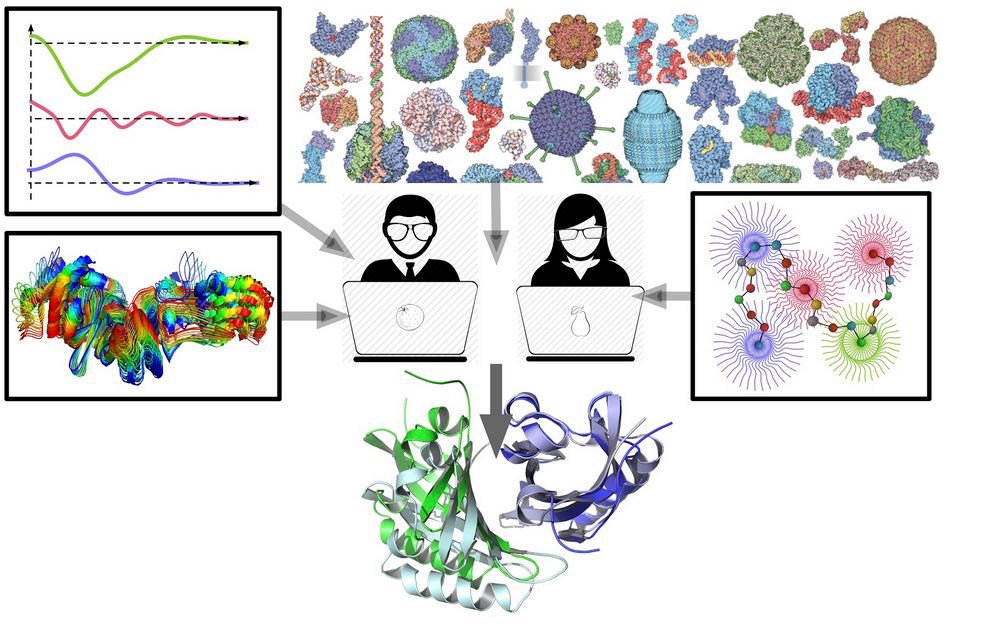Speaker
Description
Since the conformation of RiboNucleic Acids (RNA) is a key for its function, experimental techniques at different levels of resolution are implemented to determine its structure. Because of the flexibility and the large size of certain RNAs, their structure cannot be determined through high resolution experiments, such as nuclear magnetic resonance (NMR) and X-Ray crystallography. It is however possible to obtain small angle scattering X-Ray (SAXS) data for large systems in solution that can hint to the structure of the molecule.
The aim of my work is to develop simulation methods to couple SAXS data with molecular modeling tools and high resolution experimental data, allowing the construction of an entire model of RNAs and RNA-protein complexes, similarly to what is done for proteins[1].
We adopt coarse-grained representation of the system with 6-7 beads per nucleotide that allows to study the dynamics of large molecules and for long time scales when used for molecular dynamics simulations[2]. We developed a scheme to compute theoretical SAXS intensity profiles for the coarse-grained systems that gives results of an accuracy similar to CRYSOL[3], without having to resort to an atomistic description that would greatly slow down the dynamics.
The Chi-Squared (χ2) score (SAXS scoring fonction), giving the agreement between the target experimental intensity curve and the curve computed theoretically on-the-fly in the simulation, is used as a biasing potential generating "SAXS forces” to be added to the force field, and as a Monte Carlo weight for replica exchange simulations. The method is benchmarked on a sample of 4 structures of different sizes and architectures.
[1] S. Yang, S. Park, L. Makowski, B. Roux, Biophys. J. 96, 4449-4463 (2009)
[2] T. Cragnolini, Y. Laurin, P. Derreumaux, S. Pasquali, J. Chem. Theory Comput., 11, 3510 (2015)
[3] D. Svergun, C. Barberato, M. H. J. Koch, J. App. Cryst., 28, 768-773 (1993)

